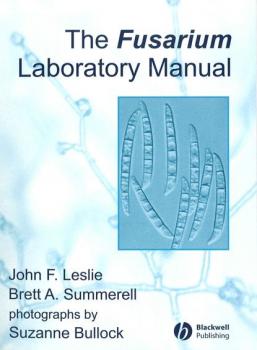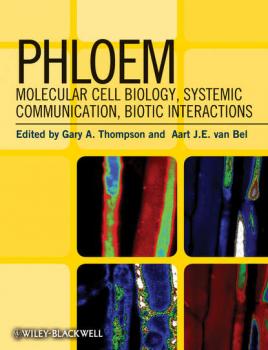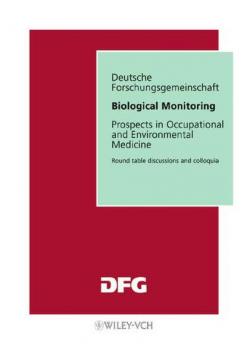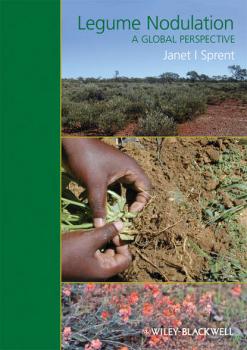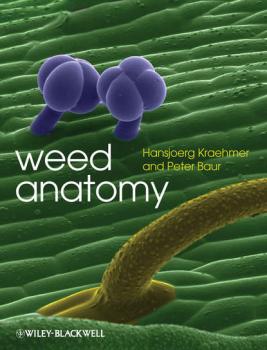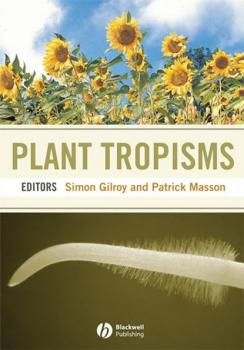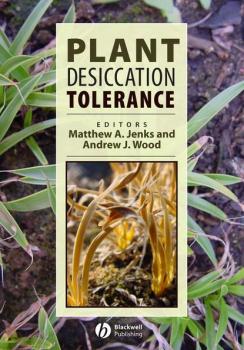Биология
Различные книги в жанре БиологияThe Fusarium Laboratory Manual
For the first time in over 20 years, a comprehensive collection of photographs and descriptions of species in the fungal genus Fusarium is available. This laboratory manual provides an overview of the biology of Fusarium and the techniques involved in the isolation, identification and characterization of individual species and the populations in which they occur. It is the first time that genetic, morphological and molecular approaches have been incorporated into a volume devoted to Fusarium identification. The authors include descriptions of species, both new and old, and provide protocols for genetic, morphological and molecular identification techniques. The Fusarium Laboratory Manual also includes some of the evolutionary biology and population genetics thinking that has begun to inform the understanding of agriculturally important fungal pathogens. In addition to practical “how-to” protocols it also provides guidance in formulating questions and obtaining answers about this very important group of fungi. The need for as many different techniques as possible to be used in the identification and characterization process has never been greater. These approaches have applications to fungi other than those in the genus Fusarium. This volume presents an introduction to the genus Fusarium, the toxins these fungi produce and the diseases they can cause. “The Fusarium Laboratory Manual is a milestone in the study of the genus Fusarium and will help bridge the gap between morphological and phylogenetic taxonomy. It will be used by everybody dealing with Fusarium in the Third Millenium.” –W.F.O. Marasas, Medical Research Council, South Africa
Phloem
Phloem: Molecular Cell Biology, Systemic Communication, Biotic Interactions is a timely collection of research on the cellular and molecular biology of this plant vascular tissue. Recent advances in phloem research have revealed the centrality of this plant tissue to whole plant development and physiology. Building on advances made through developments of new analytical technologies, this book will provide readers with a current and comprehensive reference on the role of phloem in plant growth and development. Collecting the work of a global team of leading researchers, Phloem will provide the reader with a valuable synthesis of the latest research in a single volume.
Annual Plant Reviews, Plant Nuclear Structure, Genome Architecture and Gene Regulation
This timely volume brings together expert reviews of the recent significant advances in our knowledge and understanding of the organisation of the higher plant nucleus, and in particular in the relationship between nuclear organisation and the regulation of gene expression. Rapid progress has been made in a number of key areas over the last five years, including description and characterization of proteins of the nuclear envelope and nuclear pore complex, novel insights into nucleoskeletal structures, as well as developments related to chromatin organization, function and gene expression. These advances open the way for new research into areas such as stress tolerance, plant-pathogen interactions and ultimately crop improvement and food security. Continued research into plant nuclear structure, genome architecture and gene regulation also enriches our understanding of the origin and evolution of the nucleus and its envelope. Edited by world-class researchers in plant cell biology, and comprising contributions from internationally-renowned academics, this latest volume in the prestigious Annual Plant Reviews series brings together a wealth of knowledge in the burgeoning field of plant nuclear structure and genetics. Annual Plant Reviews, Volume 46: Plant Nuclear Structure, Genome Architecture and Gene Regulation is a vital resource for advanced students, researchers and professionals in plant science and related disciplines. Libraries in all research establishments where plant science, biochemistry, molecular biology, genetics and genomics and agricultural science are taught and studied will find this excellent volume an essential addition to their shelf.
Biological Monitoring
At the invitation of the Deutsche Forschungsgemeinschaft (DFG), a round-table discussion was held on 9 and 10 March 2000, dealing with future possibilities for biomonitoring in occupational and environmental medicine. Biomonitoring has reached a high standard in Germany over the past 30 years, not least due to the fact that the results of the Senate commission on materials hazardous to health at the workplace have been directly implemented as part of the jurisdiction relating to occupational safety. This book combines the expertise gathered from various areas within toxicology, occupational medicine, immunology and human genetics, right up to analysis and epidemiology. Throughout, the focus is on comprehensively determining the diagnostic validity of cytogenetic parameters as well as biochemical and biological effect markers for the prevention of illnesses resulting from harmful substances. Thus, the discussion allowed an initial exchange of ideas, pointing to future research, so as to maintain Germany's leading role in this important and rapidly expanding field. «…provides an excellent tutorial on the use of biological monitoring in occupational and environmental medicine…should be read by everyone involved with exposure analysis.» – Chemical Chemistry
Legume Nodulation
This important book provides a comprehensive review of our current knowledge of the world's leguminous plants and their symbiotic bacteria. Written by Professor Janet Sprent, a world authority in the area, Legume Nodulation contains comprehensive details of the following: An up to date review of legume taxonomy and a full list of the world's genera Details of how legumes are distributed throughout the world A review of the evolution of legume nodulation Comprehensive details of all microorganisms known to be symbiotic with legumes Ecological and environmental aspects of legume-bacteria symbiosis Legume Nodulation is an essential purchase for plant scientists, agronomists, ecologists and microbiologists. Libraries in all universities and research establishments where biological and agricultural sciences are studied and taught should have copies of this landmark publication.
Weed Anatomy
Weeds affect everyone in the world by reducing crop yield and crop quality, delaying or interfering with harvesting, interfering with animal feeding (including poisoning), reducing animal health, preventing water flow, as plant parasites, etc. Weeds are common everywhere and cause many $ billions worth of crop losses annually, with the global cost of controlling weeds running into $ billions. The anatomy of plants is generally well understood, but the examples used for explanations in most books are often restricted to non-weed species. Weeds have many features that make them more competitive, for example enabling them to more quickly recover after herbicide treatment. Some of these adaptations include rhizomes, adapted roots, tubers and other special structures. Until now, no single book has concentrated on weeds’ anatomical features. A comprehensive understanding of these features is, however, often imperative to the successful implementation of many weed control measures. Beautifully and comprehensively illustrated, in full colour throughout, Weed Anatomy provides a comprehensive insight into the anatomy of the globally-important weeds of commercial significance. Commencing with a general overview of anatomy, the major part of the book then includes sections covering monocotyledons, dicotyledons, brackens and horsetails, with special reference to their anatomy. Ecological and evolutionary aspects of weeds are also covered and a number of less common weeds such as Adonis vernalis, Caucalis platycarpos and Scandix pecten-veneris are also included. The authors of this book, who have between them many years of experience studying weeds, have put together a true landmark publication, providing a huge wealth of commercially-important information. Weed scientists, plant anatomists and agricultural scientists, including personnel within the agrochemical and crop protection industry, will find a great deal of useful information within the book’s covers. All libraries in universities and research establishments where agricultural and biological sciences are studied and taught should have copies of this exceptional book on their shelves.
Protein Conformation
How the amino acid sequence of a protein determines its three-dimensional structure is a major problem in biology and chemistry. Leading experts in the fields of NMR spectroscopy, X-ray crystallography, protein engineering and molecular modeling offer provocative insights into current views on the protein folding problem and various aspects for future progress.
Plant Tropisms
Tropisms, the defined vectorial stimuli, such as gravity, light, touch, humidity gradients, ions, oxygen, and temperature, which provide guidance for plant organ growth, is a rapidly growing and changing field. The last few years have witnessed a true renaissance in the analysis of tropisms. As such the conception of tropisms has changed from being seen as a group of simple laboratory curiosities to their recognition as important tools/phenotypes with which to decipher basic cell biological processes that are essential to plant growth and development. Plant Tropisms will provide a comprehensive, yet integrated volume of the current state of knowledge on the molecular and cell biological processes that govern plant tropisms.
Forensic Entomology
This invaluable text provides a concise introduction to entomology in a forensic context and is also a practical guide to collecting entomological samples at the crime scene. Forensic Entomology: An Introduction: Assumes no prior knowledge of either entomology or biology Provides background information about the procedures carried out by the professional forensic entomologist in order to determine key information about post-mortem interval presented by insect evidence Includes practical tasks and further reading to enhance understanding of the subject and to enable the reader to gain key laboratory skills and a clear understanding of insect life cycles, the identification features of insects, and aspects of their ecology Glossary, photographs, the style of presentation and numerous illustrations have been designed to assist in the identification of insects associated with the corpse; keys are included to help students make this identification This book is an essential resource for undergraduate Forensic Science and Criminology students and those on conversion postgraduate M.Sc. courses in Forensic Science. It is also useful for Scenes of Crime Officers undertaking diploma studies and Scene Investigating Officers.
Plant Desiccation Tolerance
Plant desiccation tolerance is of great basic and applied scientific interest. Understanding plant responses and adaptations to severe desiccation is key to applying desiccation tolerance research to the improvement of economically important crops. Plant Desiccation Tolerance brings together a field of international researchers to provide a current review of the advances in plant desiccation tolerance research. The book is broken up into three sections: Vegetative Desiccation Tolerance; Desiccation Tolerance of Pollen, Spores, and Seeds; and Applications of Desiccation Tolerance Research. Completely up-to-date and written by leading desiccation experts, Plant Desiccation Tolerance will be of great interest to plant researchers and plant and crop science professionals.
